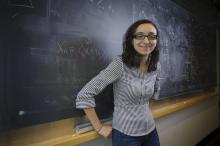Galaxies form and grow by merging with other galaxies, making the formation history of a galaxy resemble that of a family tree. Our galaxy, the Milky Way, is no exception, and with recent telescopes like Gaia, we are able to build the Milky Way's family tree. We find that a large galaxy, called Enceladus after the Greek giant son of Gaia, merged with the Milky Way about 10 billion years ago, leaving a large trail of old stars. However, these mergers did not only bring in stars, but also something unseen, the Dark Matter, a hypothesized matter making up 86% of the local universe but is yet to be directly detected. These ethereal Dark Matter particles have different dynamics from the ones born in the Milky Way, affecting Dark Matter searches by creating local dark hurricanes. In this talk, I will show you amazing videos of simulated merging galaxies, and emphasize how these mergers have direct implications on our searches for the mysterious Dark Matter.

